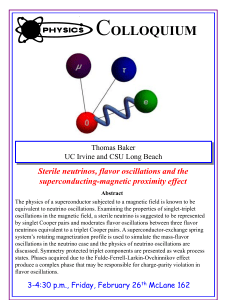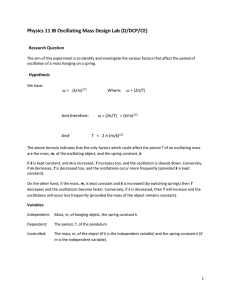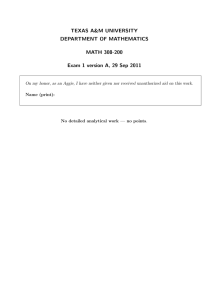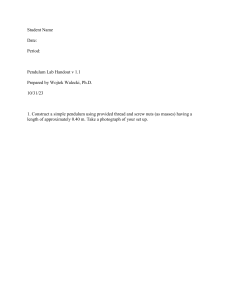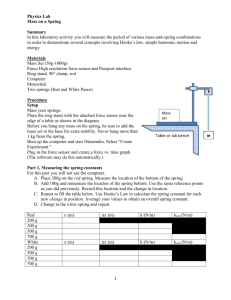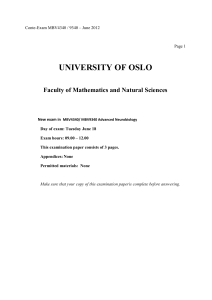Empirical Evidence for a Celestial Origin of the Climate Oscillations... Nicola Scafetta, ACRIM, Jet Propulsion Laboratory, Pasadena, California
advertisement
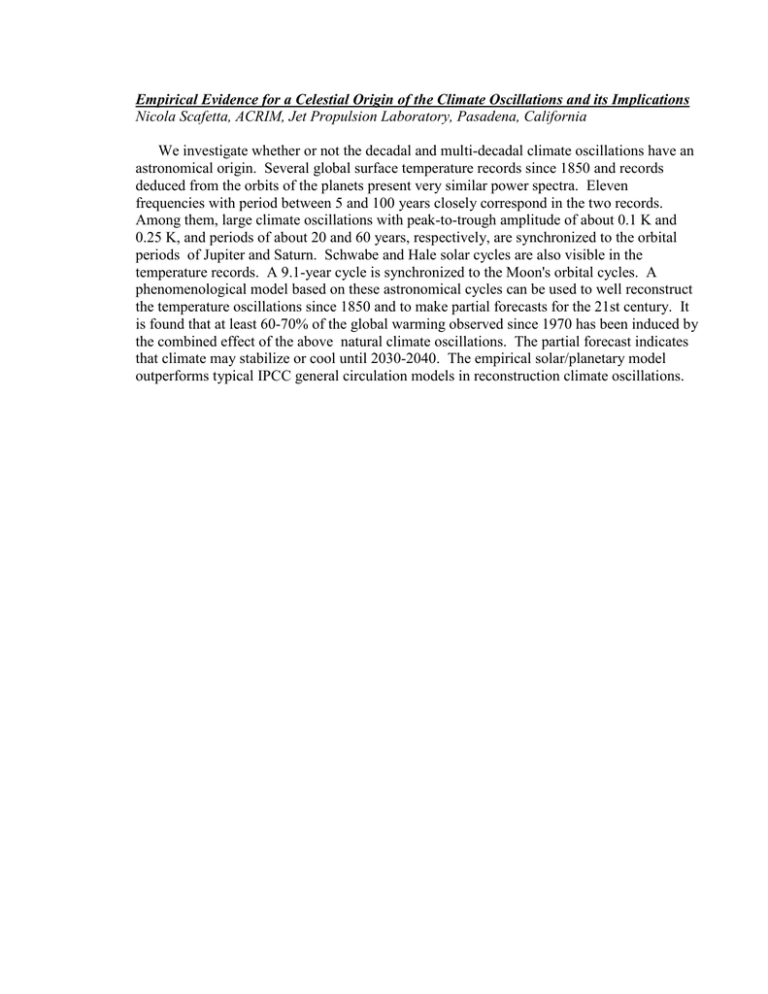
Empirical Evidence for a Celestial Origin of the Climate Oscillations and its Implications Nicola Scafetta, ACRIM, Jet Propulsion Laboratory, Pasadena, California We investigate whether or not the decadal and multi-decadal climate oscillations have an astronomical origin. Several global surface temperature records since 1850 and records deduced from the orbits of the planets present very similar power spectra. Eleven frequencies with period between 5 and 100 years closely correspond in the two records. Among them, large climate oscillations with peak-to-trough amplitude of about 0.1 K and 0.25 K, and periods of about 20 and 60 years, respectively, are synchronized to the orbital periods of Jupiter and Saturn. Schwabe and Hale solar cycles are also visible in the temperature records. A 9.1-year cycle is synchronized to the Moon's orbital cycles. A phenomenological model based on these astronomical cycles can be used to well reconstruct the temperature oscillations since 1850 and to make partial forecasts for the 21st century. It is found that at least 60-70% of the global warming observed since 1970 has been induced by the combined effect of the above natural climate oscillations. The partial forecast indicates that climate may stabilize or cool until 2030-2040. The empirical solar/planetary model outperforms typical IPCC general circulation models in reconstruction climate oscillations.




![Solar Forcing and Abrupt Climate Change over the Last 100,000... Jose A. Rial [] and Ming Yang [], University of](http://s2.studylib.net/store/data/012739005_1-c337c3e26293ae14faa36e511979b340-300x300.png)
